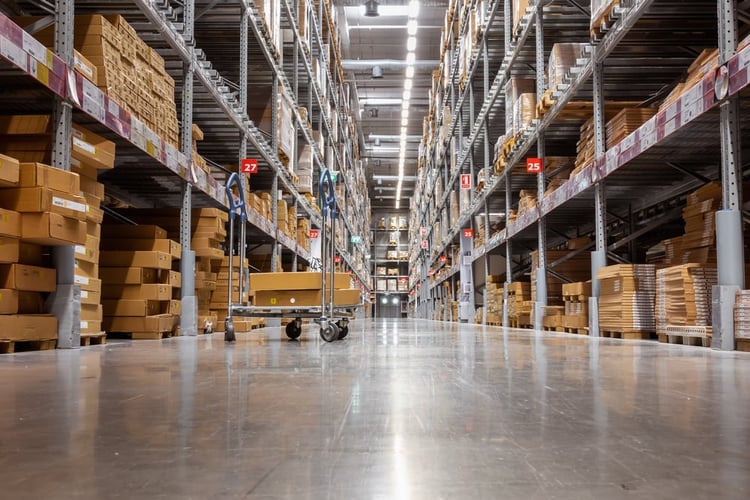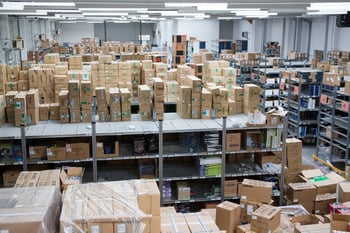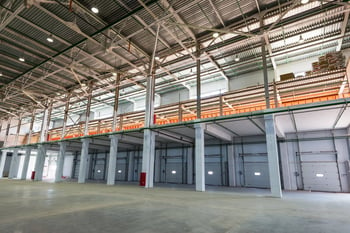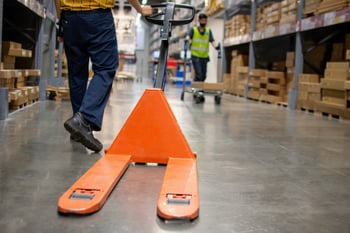
The COVID-19 pandemic revealed many weaknesses in the global supply chain. Images of container ships lined up for miles outside U.S. ports will be a lasting memory. But once those items reach land, finding places to store them has become equally challenging.
Warehouse space is more scarce and expensive than ever. Here is why this is happening and how warehouse businesses are addressing these challenges, which are likely to continue for the foreseeable future.
What's Causing the Warehouse Space Shortage
Here are some of the biggest factors that are making it tough to find warehouse space in the U.S.
1. Inventory Stockpiling
 Pandemic-related shortages have cost some retailers so much business that they began taking measures to overcompensate to ensure they don't run short on inventory again. In December 2022, U.S. inventories reached a record $2.48 trillion, up more than $450 billion from the beginning of the COVID lockdowns.
Pandemic-related shortages have cost some retailers so much business that they began taking measures to overcompensate to ensure they don't run short on inventory again. In December 2022, U.S. inventories reached a record $2.48 trillion, up more than $450 billion from the beginning of the COVID lockdowns.
As eCommerce activity has leveled out somewhat, there remains too much inventory on hand to sustain profitability. At some point, businesses will need to lower prices to shed excess inventory and free up warehouse space.
2. Lagging Development
Economic uncertainty combined with tight labor markets and high interest rates has prompted developers to pause plans for new warehouse construction. According to CBRE, even though a record 661 million square feet of industrial space was under development at the end of 2022, new starts are expected to decline by more than half in 2023. Prologis predicts that this pipeline reduction will result in a capacity shortage that latest into 2024.
3. Rising Rents
Warehouse space isn't as cheap as you would expect. Colliers reports that average rents for U.S. industrial properties were up 15.2% in 2022 over the prior, with increases over five straight years. The firm says that 13 industrial markets posted annual rent increases of over 15%, with busy port areas like New York and Los Angeles having some of the lowest vacancy rates and highest rents in the nation.
4. Diversified Locations
Many companies are choosing to diversify warehouse locations. For example, more warehouses are opening in smaller metro areas like Kansas City, Memphis, and Indianapolis. Even with these shifts, vacancy rates in cities of every size are expected to remain below their ten-year averages.
5. Warehouse Consolidation
Warehouses are getting much larger, which is pushing out the smaller players in some markets. According to Cushman & Wakefield, the average U.S. warehouse is now over 180,000 square feet, roughly 40% larger than two decades ago. In some markets, there are warehouses as large as 10 million and 4 million square feet. These might be impressive figures, but they can be bad news for smaller companies that need affordable space on a smaller scale.
How Warehouses Can Tackle Ongoing Space Challenges
Warehouse managers are faced with a host of challenges, one of them being how to deal with a shortage in warehouse space. Here are some ways warehouses can tackle ongoing space troubles.
1. Optimize Use of Existing Space
The first step in optimizing your warehouse space is analyzing how effectively the current space is being used. This is essential because it will reveal areas where you might be underutilizing some space.
One example is your aisles. You might be able to narrow your warehouse aisles to free up enough space to add one or more additional rows of shelving. You can also re-arrange items so that products most frequently turned over are closer to your loading and shipping docks.
2. Create a Mezzanine Space
 Mezzanines are an excellent way to use your warehouse's vertical space. If you have an existing warehouse that is jam-packed, instead of looking for another building or adding an addition, see if you can store items on vertical shelving units.
Mezzanines are an excellent way to use your warehouse's vertical space. If you have an existing warehouse that is jam-packed, instead of looking for another building or adding an addition, see if you can store items on vertical shelving units.
Some warehouses are adding space 20 feet or more off the ground. This is an ideal area for excess inventory items. You can shift items around as the need arises or as the demand for certain products changes.
3. Store Same-Size Items Together
Another way to increase your warehouse storage space is to store same-size items together. Instead of making all of your shelving and storage spaces similar sizes, make the extra effort to customize your storage spaces to suit different categories of items. This will free up a ton of space.
If you have an area just for bulk items or designated only for small items, you'll notice that you can accommodate more of each than if you mix these products together. When you use your warehouse's vertical space, make sure you are storing larger items down low for easy access and safety purposes.
4. Use Compact Equipment
 Warehouses are designed to allow for the use of various pieces of equipment, like forklifts. But wide aisles won't allow you to maximize your storage space. When you review your space situation, see if you can also make use of more compact equipment in your warehouse.
Warehouses are designed to allow for the use of various pieces of equipment, like forklifts. But wide aisles won't allow you to maximize your storage space. When you review your space situation, see if you can also make use of more compact equipment in your warehouse.
Many warehouses are using smaller forklifts, hand trucks, and walkies to move items around in limited space. To limit some of the repetitive walking in these tighter spaces, you can also implement mobile workstations and other automation solutions, allowing workers to get more done safely and efficiently.
5. Leverage Demand Forecasting
Maximizing your warehouse space means you are managing your inventory in the most effective way possible. If you are storing too much of one product and too little of another, this isn't getting the job done and is probably wasting space.
Leverage the data you collect from a variety of sources to produce more accurate demand forecasts. These will allow you to clear out obsolete inventory from your shelves and order the items that will continue to move.
The good news is that pandemic-related disruptions that threw supply chains into disarray over the past several years have subsided greatly. But the combination of surplus inventory, lower development starts, and rising eCommerce sales has created a warehouse space crunch that will persist for the foreseeable future. Fortunately, these strategies can help warehouses weather this storm and even improve efficiencies in the short and long term.











